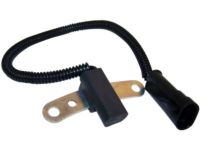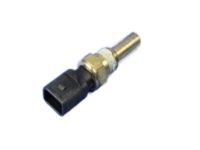
Why choose MoparPartsGiant
- Optimal Shopping Experience
Want to buy parts for your Jeep Comanche? Look no further than MoparPartsGiant.com, the best place for Jeep Comanche genuine parts. For years, all of our Jeep Comanche auto parts and accessories have been expedited directly from dedicated dealers and backed by the manufacturer's warranty, so buying from MoparPartsGiant.com is always risk-free.
- Dedicated Customer Service
Our first-class customer service team is committed to providing you with the best assistance possible. Dedicated representatives are standing by to assist you by email, live chat, or phone. Every effort is made to ensure your order for OEM Jeep Comanche parts arrives fast no matter your location in the nation, so your vehicle is up and running and back on the road.
- Unbeatable Prices
What makes us the best online source for Jeep Comanche parts and Jeep Comanche truck parts? Our goal is to offer the lowest prices. You get giant savings shopping with MoparPartsGiant.com. With a complete Jeep Comanche parts catalog, we cover a full selection of affordable OEM Jeep Comanche parts and pickup parts with a huge inventory.
Popular Genuine Jeep Comanche Parts
- Engine Parts View More >
- Electrical Parts View More >
- Fuel Parts View More >
- Body - Sheet Metal Except Doors Parts View More >
- Cooling Parts View More >
- Steering Parts View More >
- Brakes Parts View More >
- Suspension & Drive Parts View More >
- Transmission Parts View More >
- Exhaust Parts View More >
- Heater & Air Conditioning Parts View More >
- Body - Doors And Related Parts View More >
Shop Genuine Jeep Comanche Parts with MoparPartsGiant.com
The Jeep Comanche is a distinctive pickup variant of a compact SUV, manufactured and sold between 1986 and 1992. The Comanche was a versatile vehicle, offering both rear-wheel and four-wheel-drive models, and two load length options: 6 feet and 7 feet. Unveiled in mid-1985 at a grand event, the Comanche was the creation of renowned engineer and international sales manager, Jose Dederwaerder. The vehicle boasted a hybrid design, combining a conventional body-on-frame construction in the rear with a unibody construction in the front half. Engine choices for the first Jeep Comanche included a standard 2.5L four-cylinder motor and optional 2.8L V6 or 2.1-liter I4 turbodiesel. Transmissions ranged from a four-speed manual to a TorqueFlite A904 three-speed automatic. Notably, the Comanche implemented a Quadralink front suspension, comprising of coil springs and upper/lower springs mounted on a rigid axle, designed to offer a comfortable ride and enhance off-road performance. Special metric tonnage kits were available for the long-wheelbase models, featuring heavier springs and wheels, wider tires, and other exclusive Jeep Comanche parts. Through its blend of design innovation and functional versatility, the Jeep Comanche remains an iconic model in the realm of pickup trucks.
Jeep Comanche's payload capacity of 1,400 to 2,205 lbs makes it a competitive choice in the compact pickup segment. However, over time, common issues such as cooling system failure and transmission failure might arise. Cooling system failure, which is closely linked with engine performance, starts with noticeable coolant leakage and progresses to continuous high engine operation temperature, black smoke emission, and the presence of milky oil or steam from the radiator. To tackle this, key components like the coolant temperature sensor, water pump, and various gaskets need to be inspected. On the other hand, transmission failure might result in clunking sounds from the vehicle, difficulty in gear shifting, mismatched gear indicator, and reluctance of the vehicle to engage any gear. This requires good upkeep of the transfer case seal and shift cable. However, prevention is more critical than problem-solving, thus, routine maintenance of parts such as windshield wiper, fog light, headlight, cabin air filter, and antenna is crucial for a safe and comfortable driving environment.
Opting for OEM parts is the ultimate decision for ensuring top-notch quality and optimal functionality. These parts undergo rigorous quality inspections and are meticulously crafted to meet Jeep's factory standards, thereby guaranteeing a hassle-free installation process. Wondering where to find exceptional quality and affordable OEM Jeep Comanche parts, like Wiper & Washers And Cylinder & Keys, Interior? You have already come to the right place. Our website boasts a huge selection of genuine Jeep Comanche parts at the most economical prices possible. What's more, all parts come with a manufacturer's warranty.
Jeep Comanche Parts Questions & Answers
- Q: How do you remove and install a distributor on Jeep Comanche?A: To remove the distributor, start by disconnecting the cable from the negative battery terminal. Then, detach the primary lead from the coil and disconnect all wires from the distributor. Look for a raised "1" on the distributor cap to locate the number one cylinder spark plug wire terminal. Remove the distributor cap and turn the engine over until the rotor is pointing towards the number one spark plug terminal. Make a mark on the distributor base below the rotor tip and remove the distributor hold down bolt and clamp. Pull the distributor straight up to remove it. To install the distributor, ensure that the number one piston is at top dead center (TDC) and insert the distributor into the engine in the same relationship to the block as it was before removal. Mesh the helical gears on the camshaft and distributor and recheck the alignment marks. Finally, install the hold-down clamp, attach the electrical wires and spark plug wires, connect the battery cable, and check the ignition timing before tightening the distributor hold down bolt securely.
- Q: What does the Intake Manifold Temperature Sensor,Knock Sensor,MAP Sensor,Oxygen Sensor,Speed Sensor,Coolant Temperature Sensor and Throttle Position Sensor do on Jeep Comanche?A: Information sensors provide data on engine conditions, aiding in fuel economy and emission reduction. The oxygen sensor in the exhaust manifold measures oxygen content in the exhaust, adjusting the fuel/air mixture. The knock sensor detects engine detonation, retarding ignition timing. The coolant temperature sensor monitors temperature for fuel/air mixture adjustments. The manifold absolute pressure sensor reads pressure changes to vary the air/fuel mixture. The manifold air temperature sensor measures air temperature for fuel/air adjustments. The crankshaft position sensor detects engine speed for ignition timing and fuel control. The vehicle speed sensor determines vehicle speed.


















































